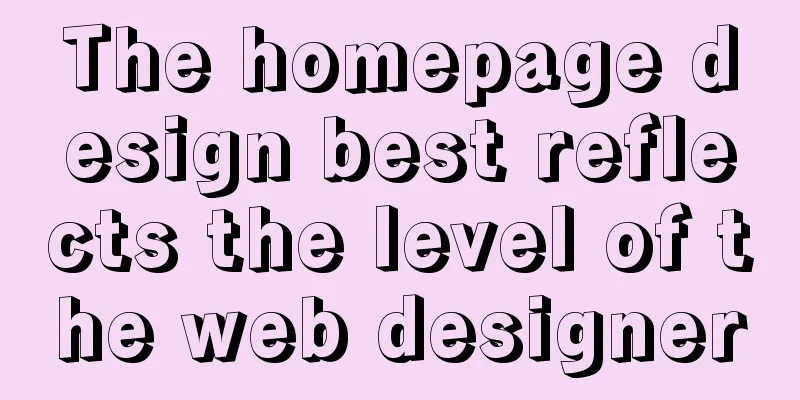Implementation of element multiple form validation

|
In the project, form testing is often encountered. For a single form test, you can view the official website document of element, which has a detailed introduction. Here I share my experience of checking multiple forms at the same time in an actual project and my solution. Welcome everyone to leave a message and discuss related technologies together. Please give me more advice.
Promise is mainly used here to solve this problem. Let's take an example to abstractly understand the Promise method: If you want to eat hotpot on the weekend, call Xiao A and tell him to come over to my place for hotpot. All the dishes are ready except for the seafood. You can bring some when you come. Then I called my friend Xiao B and asked him to come over to my place for hotpot. There is seafood, but not enough meat. You can bring some when you come. Then I called my friend Xiao C: Come over to my place for hotpot. I have all the dishes and we're almost done with wine. Bring me a few bottles when you come. I'm still short of a packet of hot pot base. I took out my cell phone and called, "Xiao D, come and help me. Why are all of you here? My electric stove is not working properly. Everything is ready. Can you bring the stove over here and also the packet of base?" Eating hotpot is now a done deal, so delicious. But this matter. Things won't always go smoothly, there will always be people who can't come, right? If they can't come, we can't enjoy the hotpot. In fact, multiple form verification is similar to this. Each form is asked once. If everyone passes, you’re happy. If one of the verification fails, I’m sorry, but I have to tell the user to fill it out correctly first. Through Promise, query detection is performed on each form. Regardless of the result, enter Promise.all first and wait for all forms to be queried. If everyone is OK, then trigger then, which is great. On the contrary, if the execution fails in the catch, the response is ok.
const formName = ['tableForm1', 'tableForm2', 'tableForm3']
const validates = (item) => {
return new Promise((resolve, reject) => {
if (!this.$refs[item]) {
resolve()
return false
}
this.$refs[item].validate((valid) => {
if (valid) {
resolve()
} else {
reject(new Error('Verification is incorrect'))
}
})
})
}
Promise.all(formName.map(item => validates(item))).then(() => {
console.log('success')
}).catch(() => {
console.log('failed')
})
}
}
Finally, here is the complete code:
<div class="home">
<el-form :model="tableForm1" ref="tableForm1" :rules="rules1" label-width="100px" >
<el-form-item label="Price" prop="price">
<el-input v-model.number="tableForm1.price" autocomplete="off"></el-input>
</el-form-item>
</el-form>
<el-form :model="tableForm2" ref="tableForm2" :rules="rules2" label-width="100px" >
<el-form-item label="age" prop="age">
<el-input v-model.number="tableForm2.age" autocomplete="off"></el-input>
</el-form-item>
</el-form>
<el-form :model="tableForm3" ref="tableForm3" :rules="rules3" label-width="100px" >
<el-form-item label="Name" prop="name">
<el-input v-model.number="tableForm3.name" autocomplete="off"></el-input>
</el-form-item>
</el-form>
<el-button type="primary" @click="submitForm">Submit</el-button>
<el-button @click="resetForm">Reset</el-button>
</div>
</template>
<script>
export default {
name: 'Home',
data () {
return {
tableForm1: {
price: ''
},
tableForm2: {
age: ''
},
tableForm3: {
name: ''
},
rules1: {
price: [{ required: true, message: 'Price cannot be empty', trigger: 'blur' }]
},
rules2: {
age: [{ required: true, message: 'Age cannot be empty', trigger: 'blur' }]
},
rules3: {
name: [{ required: true, message: 'Name cannot be empty', trigger: 'blur' }]
}
}
},
methods: {
resetForm () {
this.$refs.tableForm1.resetFields()
this.$refs.tableForm2.resetFields()
this.$refs.tableForm3.resetFields()
},
submitForm () {
const formName = ['tableForm1', 'tableForm2', 'tableForm3']
const validates = (item) => {
return new Promise((resolve, reject) => {
if (!this.$refs[item]) {
resolve()
return false
}
this.$refs[item].validate((valid) => {
if (valid) {
resolve()
} else {
reject(new Error('Verification is incorrect'))
}
})
})
}
Promise.all(formName.map(item => validates(item))).then(() => {
console.log('success')
}).catch(() => {
console.log('failed')
})
}
}
}
</script>
This is the end of this article about the implementation of multiple form validation in element. For more relevant element form validation content, please search for previous articles on 123WORDPRESS.COM or continue to browse the following related articles. I hope everyone will support 123WORDPRESS.COM in the future! You may also be interested in:
|
<<: Detailed tutorial on installing mysql 8.0.13 (rpm) on Centos7
>>: How to set up automatic daily database backup in Linux
Recommend
Detailed explanation of the "/" problem when proxy_pass forwards according to the path path
When configuring proxy_pass in nginx, if you matc...
Implementation of sharing data between Docker Volume containers
What is volume? Volume means capacity in English,...
MySQL v5.7.18 decompression version installation detailed tutorial
Download MySQL https://dev.mysql.com/downloads/my...
Code block highlighting can be copied and displayed js plug-in highlight.js + clipboard.js integration
Mainly from two aspects: 1. Highlight/Line Break ...
A few steps to easily build a Windows SSH server
The SSH mentioned here is called Security Shell. ...
Super detailed tutorial to implement Vue bottom navigation bar TabBar
Table of contents Project Introduction: Project D...
Javascript design pattern prototype mode details
Table of contents 1. Prototype mode Example 1 Exa...
mysql subquery and join table details
Table of contents 1. What is a subquery? 2. Self-...
Linux system dual network card binding configuration implementation
System version [root@ ~]# cat /etc/redhat-release...
How to build a redis cluster using docker
Table of contents 1. Create a redis docker base i...
Two solutions for automatically adding 0 to js regular format date and time
Table of contents background Solution 1 Ideas: Co...
Comparison of several examples of insertion efficiency in Mysql
Preface Recently, due to work needs, I need to in...
Introduction to installing JDK under Linux, including uninstalling OpenJDK
1. View openjdk rpm -qa|grep jdk 2. Delete openjd...
Detailed explanation of 10 common HTTP status codes
The HTTP status code is a 3-digit code used to in...
js dynamically implements table addition and deletion operations
This article example shares the specific code for...










